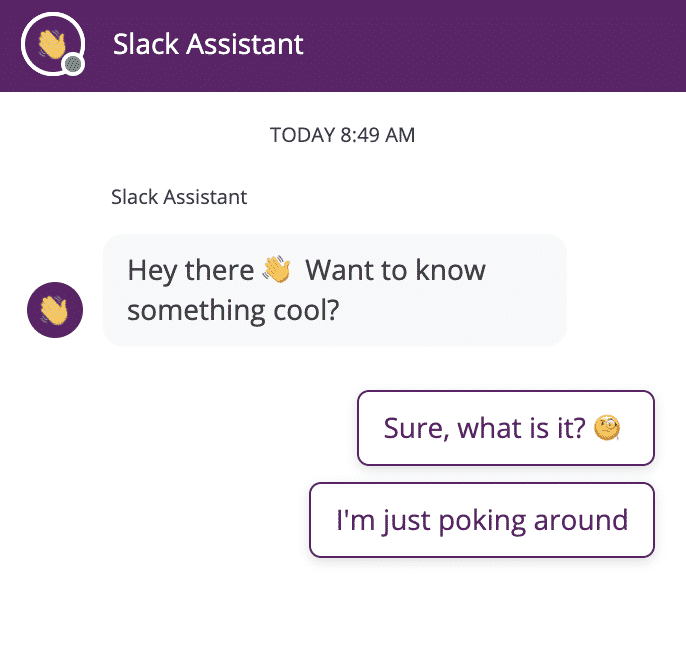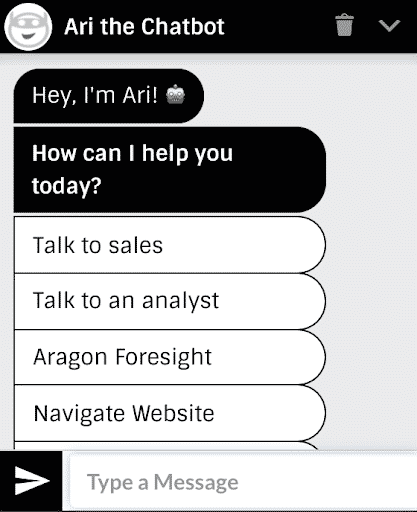Chatbots VS Conversational AI: What’s the Difference?
Day-to-day interactions – both personal and professional – are becoming increasingly digitized. It’s likely that you text, call, or FaceTime many of your friends and family members more often than you speak to them face-to-face. Likewise, business-to-customer relations are largely fostered in a digital environment.
Technology has become exponentially more intelligent, therefore increasing the timeliness and effectiveness of interactions between customers and computers. Chatbots and conversational artificial intelligence (AI) are largely responsible for such relations. Although they accomplish similar results, they aren’t the same.
In this blog, I’ll define chatbots and conversational AI and dive deeper into discrepancies between the two.
What are Chatbots?
Chatbots are a class of digital agents that use simple technologies to interact with customers through a digital interface. They have become increasingly popular throughout recent years, as they help businesses quickly and effortlessly answer customers’ basic questions about their product or service.
Chatbots have become one of the most frequently used technologies to offer customers online support. They can answer FAQs surrounding services, shipping, return policies, website issues, and more.
But chatbots aren’t always for external communication – they can also be quite useful for internal business operations. Slack, a messaging platform for businesses, uses a personalized chatbot feature that helps employees save time and effort by automating their daily tasks (like scheduling meetings).
What is Conversational AI?
Conversational AI is a combination of technologies that automates conversation-based interactions between computers and humans. Sound familiar? That’s because many chatbots use conversational AI – but we’ll dive into the relationship between chatbots and conversational AI a bit later.
Conversational AI uses machine learning (ML) and natural language processing (NLP) technologies to understand verbal and written communication, different languages, and the intent of the individual or group it is interacting with.
Though conversational AI is beneficial for a wide array of needs, it is particularly useful for business-to-customer relations. Automating interactions with customers rather than hiring and paying employees to manage customer relations saves time and money.
Read More: Hot Vendors in Conversational AI, 2021
How Conversational AI Works
ML and NLP technologies are essential in any conversational AI platform.
ML allows an AI platform to learn from interactions, therefore evolving over time and constantly working to create seamless conversations.
NLP allows a machine to understand an individual’s natural language. Because all humans have a different way of speaking, conversational AI must be able to understand what they are trying to say despite accents, slang, abbreviations, mispronunciations, or incorrect syntaxes.
In other words, conversational AI is capable of human-like conversations due to its ability to learn and adapt.
Chatbots VS Conversational AI: The Lowdown
‘Chatbots’ and ‘conversational AI’ are often used interchangeably – but they aren’t the same thing.
Although chatbots can appear quite advanced, they are often composed of basic technologies – so basic that some simply cannot be described as conversational AI. A FAQ bot, for example, may not use ML or NLP. It may prompt a user with a question and then provide them with simple, pre-written responses like “Yes” or “No.” Here’s an example on the Slack website:

This chatbot doesn’t use conversational AI, but it’s still capable of an effective conversation. In this conversation, the user is able to reply to the Slack assistant with “Sure, what is it?” or “I’m just poking around.” Though it’s pre-written, the conversation follows the direction that the user takes it.
Although not all chatbots use conversational AI, some can. Virtual personal assistants are a step-up from FAQ bots – they leave some room for ambiguity within the conversation, but the interaction remains quite general.
Ari the Chatbot – Aragon’s own virtual personal assistant – is a simple, effective tool that allows a user to either choose a pre-written answer or write their own response.

Ari the Chatbot is considered conversational AI because it uses NLP to determine an array of possible responses – not just pre-written answers.
Other examples of virtual personal assistants are Google’s Siri and Amazon’s Alexa. They can’t carry out context from one situation to the next, but they have simple dialogue management that is effective for one-time conversations.
Next comes virtual customer and employee assistants. It’s likely you’ve interacted with a virtual customer assistant, as they have greatly increased in popularity. Intelligent contact centers, for example, are conversational AI technologies that can manage customer interactions. Virtual customer and employee assistance streamline business operations for the purpose of saving time and money as well as simplifying day-to-day operations.

Read More: Improve Customer Experience With Intelligent Contact Centers
Bottom Line: Work Smarter – Not Harder – With Conversational AI
Chatbots and conversational AI are scalable, cost-effective solutions to the woes of office life.
Curious to learn how you can integrate conversational AI platforms into your business? Aragon is here to help. Consult with an Aragon analyst today or start your free 45-day trial to gain access to relevant research that will guide your business decisions.

Have a Comment on this?